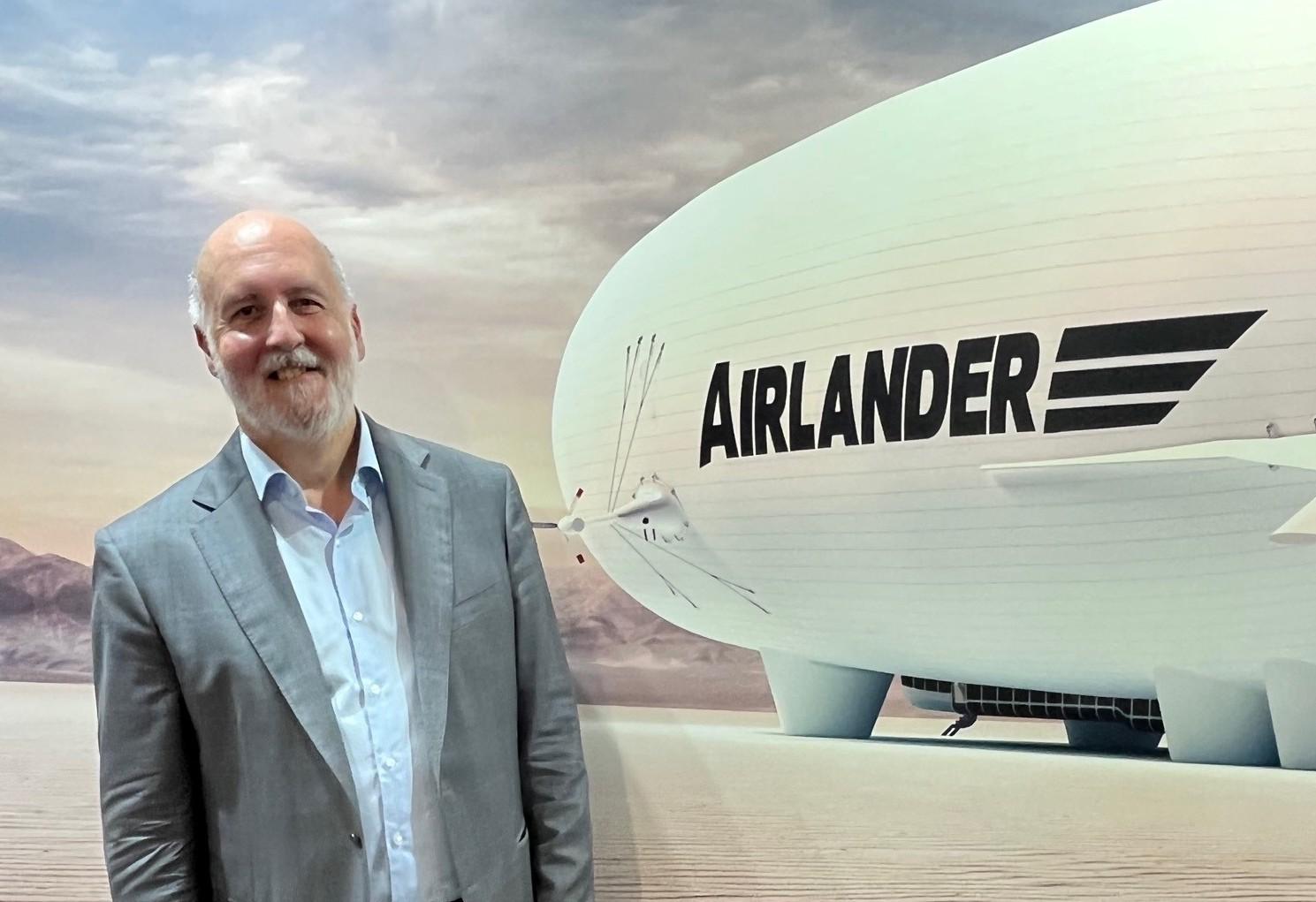
FARNBOROUGH—Spanish regional airline Air Nostrum, which plans to acquire Airlander 10 hybrid air vehicles, is considering using the platforms to create a new route network of towns and cities that do not have an airport.
The carrier announced in June that it had reserved 10 of the platforms—which resemble airships but combine buoyant lift from helium with aerodynamic lift and vectored thrust—with the aim of starting passenger operations in 2026.
The platform’s UK manufacturer, also called Hybrid Air Vehicles, plans to start production in a new factory in northern England later in 2022.
Air Nostrum, which describes itself as Europe’s largest privately owned regional airline, currently operates a fleet of more than 30 MHIRJ (formerly Bombardier) CRJ regional jets, plus five ATR 72 turboprops.
“We fly aircraft between 50-100 seats. The Airlander 10 can seat 100 passengers, so it fits perfectly,” Air Nostrum vice chairman Miguel Angel Falcon said at the Farnborough Airshow. “We have regional jets for longer distances and turboprops for shorter distances, and now we have Airlander.”
The airline is looking at opening up a new network of destinations, making use of the Airlander’s ability to land on any flat surface, or even water.
The Airlander 10, which is powered by four combustion engines—to be replaced by electric motors later this decade, thus making it 100% emission-free—has a maximum speed of 80 mph. Falcon does not consider this a disadvantage.
“We appreciate it’s not a fast aircraft. It’s quite adequate for our average stage length,” he said. The airline’s average stage length is 500 km (270 nm), but contains a segment of routes of just 200 km.
“We could consider flying into a city with a harbor rather than an airfield. It opens up a lot of opportunities,” Falcon said.
The Airlander 10 will be capable of carrying 100 passengers in a large gondola under the envelope. Renderings of the cabin show seats considerably larger than those of an aircraft. This, combined with large picture windows and extreme sustainability—an increasingly important factor for passengers—will make the aircraft attractive to passengers, Falcon believes.
The ability to board and disembark close to a town or city, rather than traveling perhaps 50 km outside a city to an airport, will also be a plus factor, he said.
Falcon also points to the aircraft’s versatility, including carrying cargo or serving the Air Nostrum Group’s firefighting division in a surveillance role.

